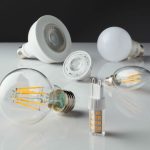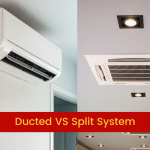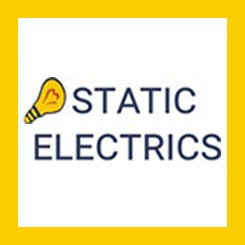Walk into any luxury property on earth at the moment, and look up. What do you see? Answer: downlights. That’s because they look so modern, sleek and cool – but it’s not just that. Many modern downlights use energy-efficient bulbs like LED, driving down your power bills. They come in dozens of different shapes, sizes and styles to suit different needs and personal preferences, and all those various downlight types are also:
- Versatile
- Customisable
- Space-saving
- Long-lasting
- Property value-maximising.
So which types of downlights are you going to choose for your home or business premises? Well, apart from personal preference or budgetary conditions, you also need to factor a lot of things in before making that expensive choice.
How many types of downlight bulbs are there? Answer: how many fingers and toes do you have? Then add a few more to cover all of the downlight bulb types and installations you can choose from, including:
- Popular fixed-position downlights
- Fully-adjustable downlights that can be tilted & adjusted
- Surface-mounted downlights that are not recessed
- Low-profile downlights with a smaller depth for limited space
- Fire-rated downlights specifically designed to slash fire risk
- Ultra-modern LED downlights for bright but energy-efficient lighting
- Dimmable downlights to suit your changing needs.
Phew, that’s a lot of types of downlights – but there are actually many more than that, too. It’s no wonder choosing the right ones for your space can be so challenging, but hopefully our step-by-step guide should help with that:
1. Consider the space
What size and shape is the room? And how high is the ceiling? This will affect how many downlights you need, and how bright they need to be to suit your needs.
2. Consider the purpose
What are you going to use the downlight-lit space for? A kitchen, for example, will need to be brighter and have a different colour temperature than a bedroom.
3. Select the downlight style
When you’re browsing the downlight catalogues, choose the style that is going to best complement the decor, purpose and style of the space. There are different shapes, technologies, sizes and finishes – and more.
4. Select the downlight type
You should now be getting close to making a wise and informed selection from all of those downlight types on the market. And if you thought our earlier list of downlight types was complete, think again, because you can also choose from:
- Gimbal downlights with a directional head
- Baffle downlights with a ribbed interior for minimal glare
- Shower downlights for wet areas
- Wall wash downlights to highlight wall textures
- Linear downlights that are perfect to highlight artwork
- Square downlights for a different, art-deco touch
- Pendant downlights that are ceiling-suspended.
5. Consider the energy efficiency
LED downlights are the most energy-efficient ones by far, which is the perfect way to light up the spaces you care about whilst also driving down your power bills.
6. Consider the installation
Don’t forget that the complexity and cost of the downlight installation can vary quite a bit, as some require recessed installation whilst others may need a mounting plate to be attached to the ceiling. This should be factored in together with the chosen downlight type’s actual ticket price.
7. Seek professional advice
It’s always a good idea to seek professional advice from a lighting specialist or fully-licensed electrician – especially if they specialise in downlight types! That’s because your installation should be safe, efficient, aesthetically perfect and fully-compliant with regulations and standards.
Explore your downlight style options today
But it’s also because downlight installation experts like the friendly guys and gals at Static Electrics put so many different types of downlights in across all sorts of homes and businesses in Brisbane, the Sunshine Coast and beyond each and every day. For expert consultation, fully-guaranteed workmanship and helpful benefits like upfront pricing, explore your options for professional downlight installation today by calling Static Electrics.














